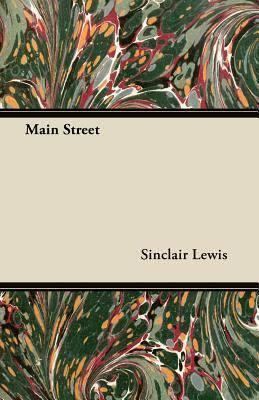7.6 /10 1 Votes7.6
Language English Pages 448 pages ISBN 1420930923 | 3.8/5 Goodreads Publication date 1920 Originally published 1920 Publisher Harcourt Country United States of America | |||||||||||||||||||||||||||||||||
 | ||||||||||||||||||||||||||||||||||
Media type Print (hardback & paperback), and audiobook Genres Novel, Fiction, Biography, Autobiography, Children's literature Similar Sinclair Lewis books, Novels, Classical Studies books | ||||||||||||||||||||||||||||||||||
Main Street is a satirical novel written by Sinclair Lewis, and published in 1920.
Contents
Plot summary
Carol Milford is a liberal, free-spirited young woman, reared in Saint Paul, Minnesota, the state capital. She marries Will Kennicott, a doctor, who is a small-town boy at heart.
When they marry, Will convinces her to live in his home-town of Gopher Prairie, Minnesota, a town modeled on Sauk Centre, Minnesota, the author's birthplace. Carol is appalled at the backwardness of Gopher Prairie. But her disdain for the town's physical ugliness and smug conservatism compels her to reform it.
She speaks with its members about progressive changes, joins women's clubs, distributes literature, and holds parties to liven up Gopher Prairie's inhabitants. Despite her friendly but ineffective efforts, she is constantly derided by the leading cliques.
She finds comfort and companionship outside her social class, but these companions are taken from her one by one.
In her unhappiness, Carol leaves her husband and moves for a time to Washington, D.C., but she eventually returns. Nevertheless, Carol does not feel defeated:
I do not admit that Main Street is as beautiful as it should be! I do not admit that Gopher Prairie is greater or more generous than Europe! I do not admit that dish-washing is enough to satisfy all women! I may not have fought the good fight, but I have kept the faith. (Chapter 39)
Literary significance and criticism
Some of Lewis's contemporaries said the novel was too bleak, even humorless, in its conveyance of ignorant small-town life and people. However, Main Street is generally considered to be Lewis's most significant and enduring work, along with its 1922 successor Babbitt.
Some small-town residents resented their portrayal and the book was banned by the public library of Alexandria, Minnesota.
Because of the popularity acquired by Lewis and his book, high-school teams from his hometown of Sauk Centre, Minnesota, began to be called the Main Streeters as early as the 1925–26 school year. This name was essentially given to the town by the nearby towns at school events. The Sauk Centre High School still goes by the name in a tribute to Lewis.
Awards and nominations
Main Street was initially awarded the 1921 Pulitzer Prize for literature, but was rejected by the Board of Trustees, who overturned the jury's decision. The prize went, instead, to Edith Wharton for The Age of Innocence. In 1926 Lewis refused the Pulitzer when he was awarded it for Arrowsmith.
In 1930, Lewis was the first American ever awarded the Nobel Prize for Literature. While a Nobel Prize is awarded to the author not the work, and itself does not cite a particular work for which he was chosen, Main Street was Lewis' best-known work and enormously popular at the time. In the Nobel committee's presentation speech, both Main Street and Arrowsmith were cited. The prize was awarded "...for his vigorous and graphic art of description and his ability to create, with wit and humour, new types of characters."
In 1998, the Modern Library ranked Main Street #68 on its list of the 100 best English-language novels of the 20th century.
